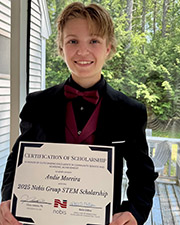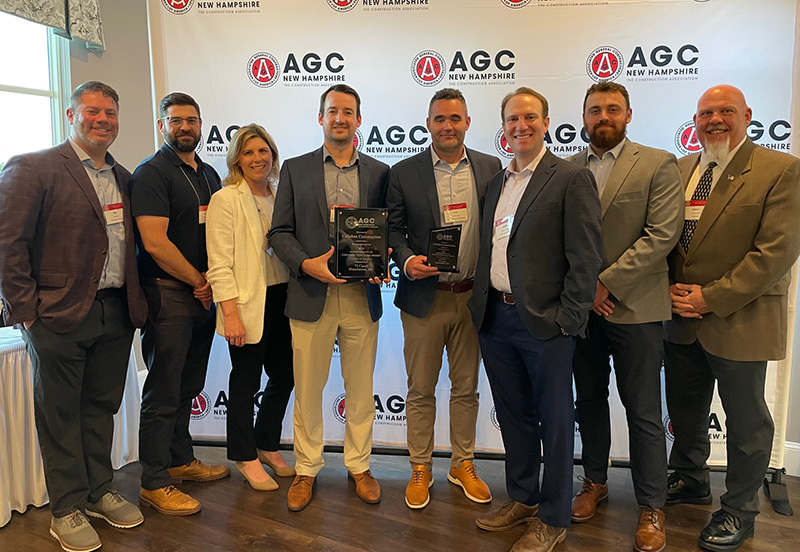Bruner/Cott Architects reimagines Connecticut’s Swift Gold Leaf Factory as a Community Job Incubator

Hartford, CT Renowned for reimagining historical buildings as well as innovative new construction, Bruner/Cott Architects has completed an adaptive reuse conversion of the Swift Gold Leaf Factory, a disinvested Connecticut community. Once the economic heart of its neighborhood employing over 300 people at its peak, the factory closed in 2005 as production waned, leaving residents unemployed. Decades of systemic challenges drove unemployment to 25% and left nearly half of the population living below the poverty line, leading to its HUD Promise Zone designation in 2015.
Working with non-profit partner Community Solutions (NYC), dedicated to find a lasting end to homelessness that leaves no one behind, Bruner/Cott has reimagined the former factory’s historical buildings and two homes dating from 1887 to 1948 into a venue generating opportunities for job creation and training, educating youth, improving resident health, and spurring economic growth.
Architecturally, the transformation focused on repairing the neglected factory complex to its original character. Existing structures were gutted to make room for incubator kitchen space for fledgling local businesses, a community-based private school, and shared office space for local entrepreneurs and start-ups. Food production is the primary tenant, as the industry offers attainable jobs for individuals who may not have completed high school or have other barriers to employment.
Opaque fiberglass windows, originally installed to block views of the gold leafing operation and to resist shattering, have been replaced with well-crafted black-framed glass windows. Thoughtful repair and cleaning of the buildings’ brick facades strike a balance between maintaining historic patina and displaying a sense of care and pride in renewing the exteriors. Most of the brickwork was left untouched. New steel awnings clearly mark entrances, and inside, new programs are identified with fresh signage among the building’s old columns and wood floors.
In a time of great social and cultural change, the edifying new use of the storied Swift Factory addresses the economic, health, social, cultural, and environmental conditions of Northeast Hartford, creating a sustainable yet innovative model for improving the quality of life for its residents.
“Collaborating with Community Solutions in the transformation of the Swift Factory has been inspiring,” said Bruner/Cott partner and principal Jason Jewhurst. “The project is an excellent example of sustainable, transformative reuse that has created a hub for community-driven programs, spaces for learning and entrepreneurship, and job creation that collectively fosters partnerships and opportunities with and for the surrounding community and beyond.”
“Community Solutions was invited by several local organizations to help transform the Swift Factory in 2010,” said senior project manager Patrick McKenna. “Our first task was to ask the neighborhood what they needed and how the Swift Factory could help. The result of that survey lead to a focus on creating jobs and economic opportunity for residents. Ten years later, it is hugely satisfying to be seated in the transformed factory while watching black-owned businesses bring jobs and life back to this former neighborhood anchor. Bruner/Cott, along with the design and construction team, played a critical role in helping us realize the vision of this ambitious project, which we hope will be a catalyst for future neighborhood revitalization.”
A two-time recipient of the AIA National Honor Award for Design and innovative pioneers in adaptive reuse and new construction, Bruner/Cott is dedicated to enhancing quality of life, economic vigor, and sense of community through thoughtful and sustainable design. The most effective design solutions derive from a creative interpretation of place, culture, program, and responsibility. Bruner/Cott believes architecture is a site-specific art rather than an imposed style. Their practice thoughtfully considers each project within the context of mission and community.
Nobis Group awards Robinson and Moreira STEM scholarships


The design-build advantage: Integrated interior design solutions - by Parker Snyder

The rise of incubators and co-working spaces: The latest in life sciences - by Matt Combs

Ask the Electrician: Is summer a prime time for commercial electrical maintenance?








.png)